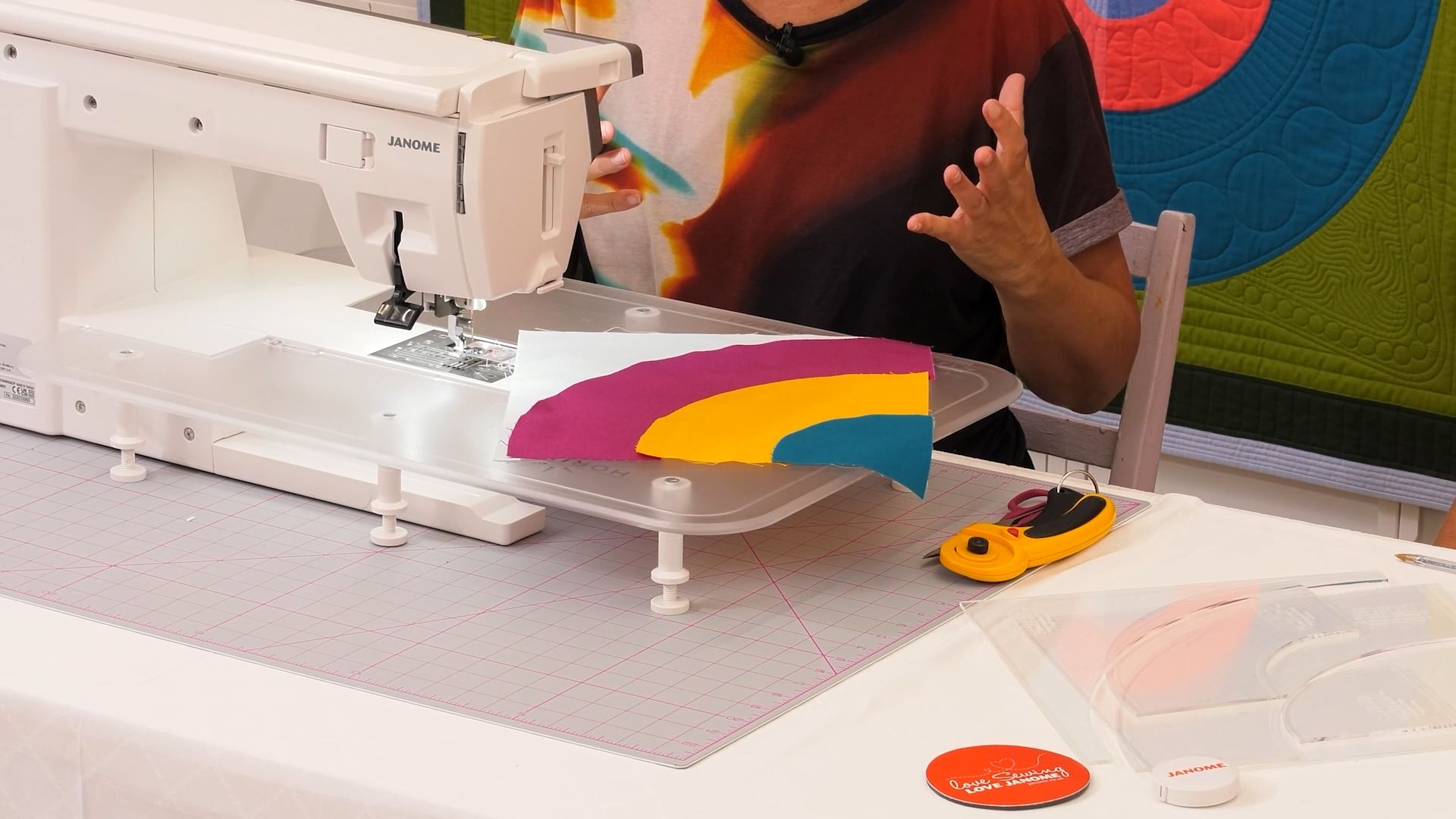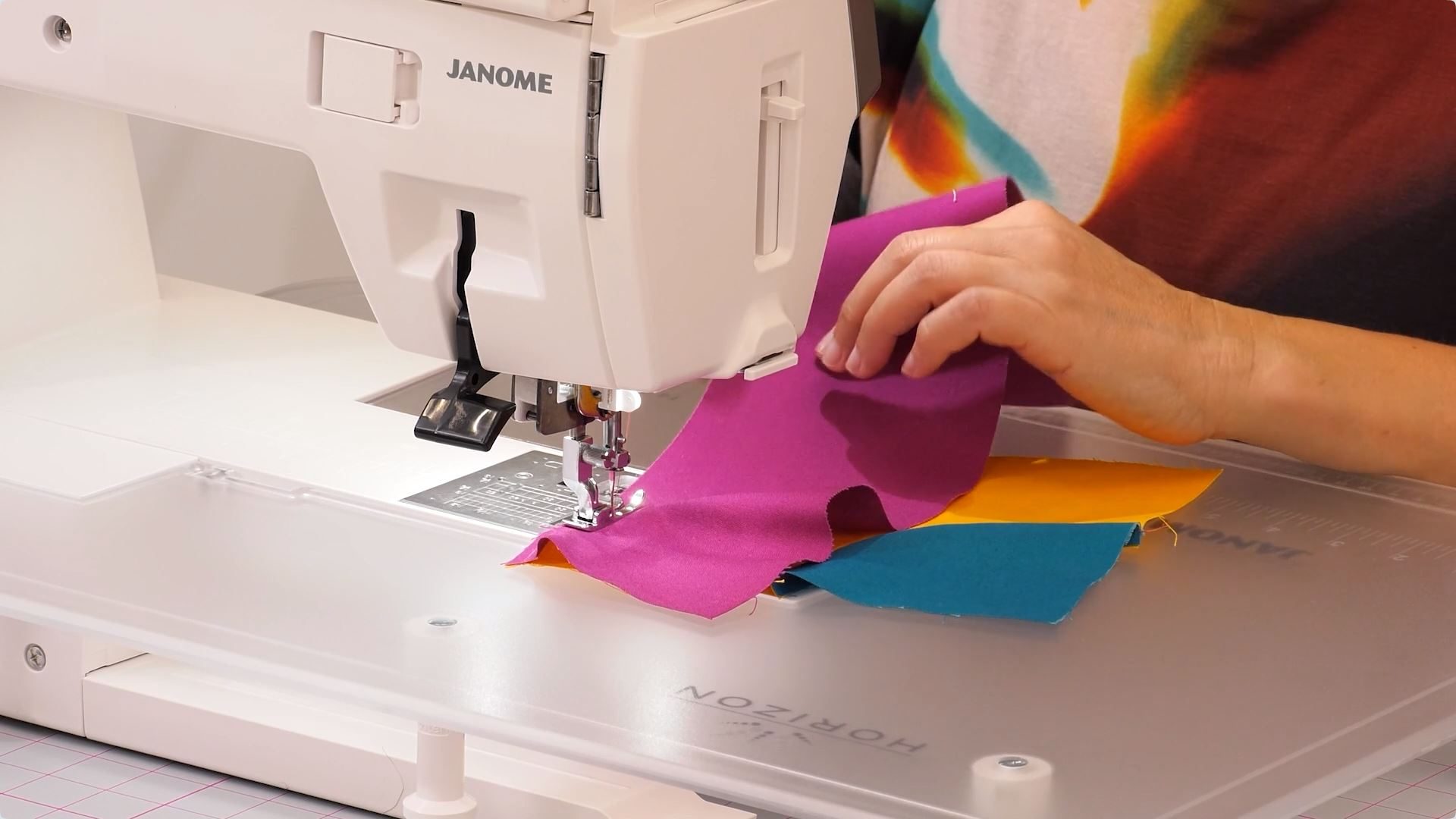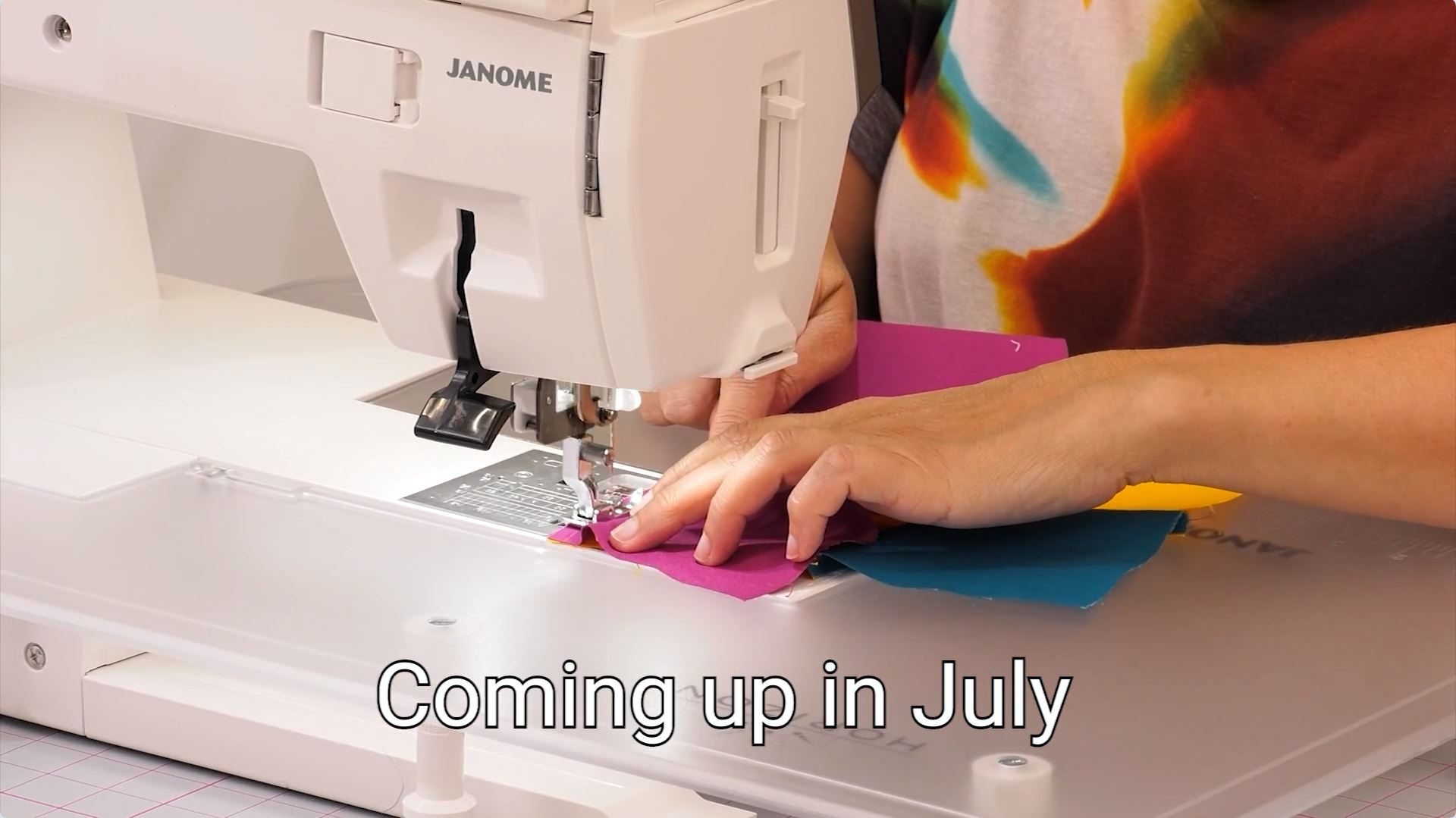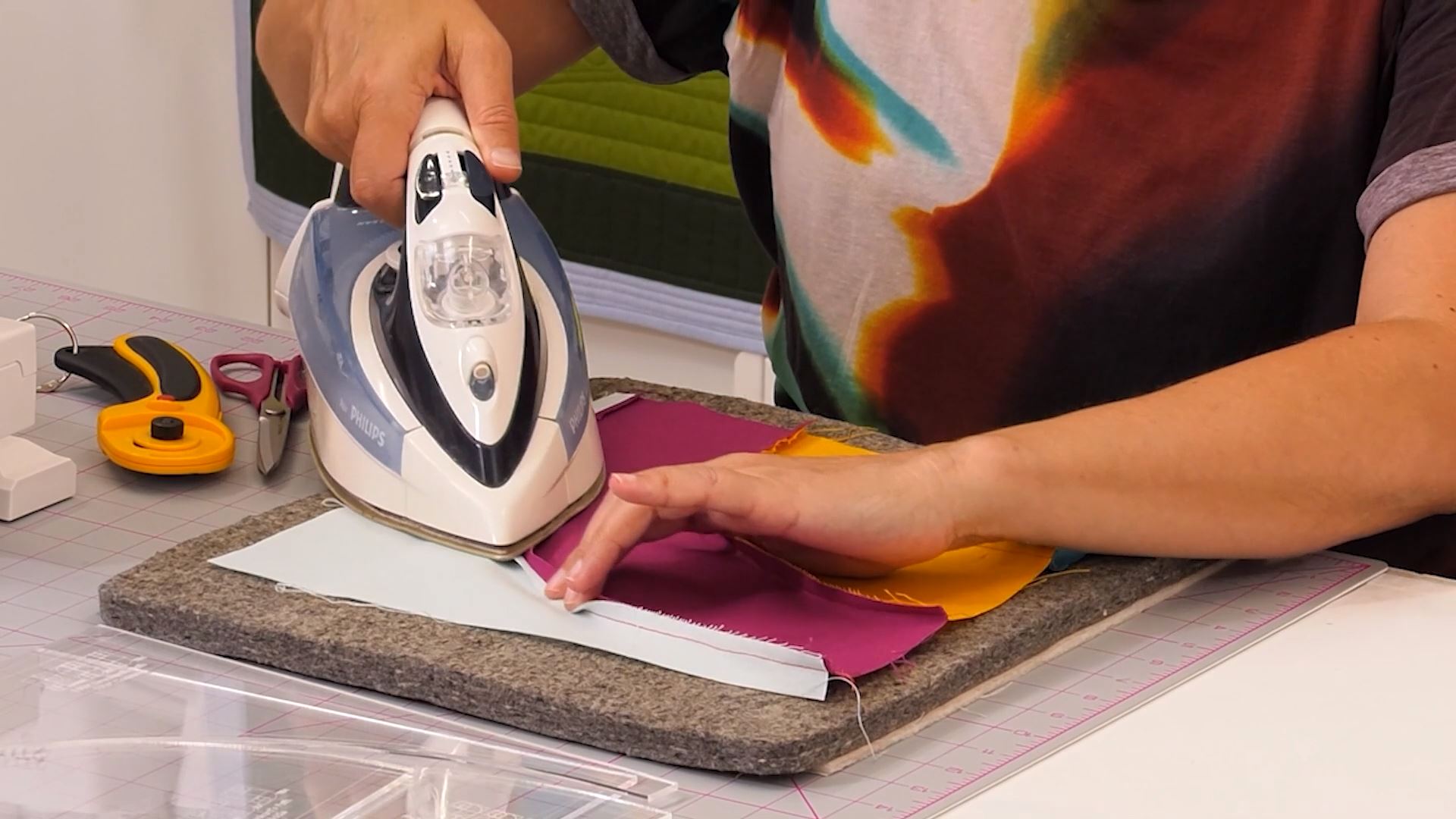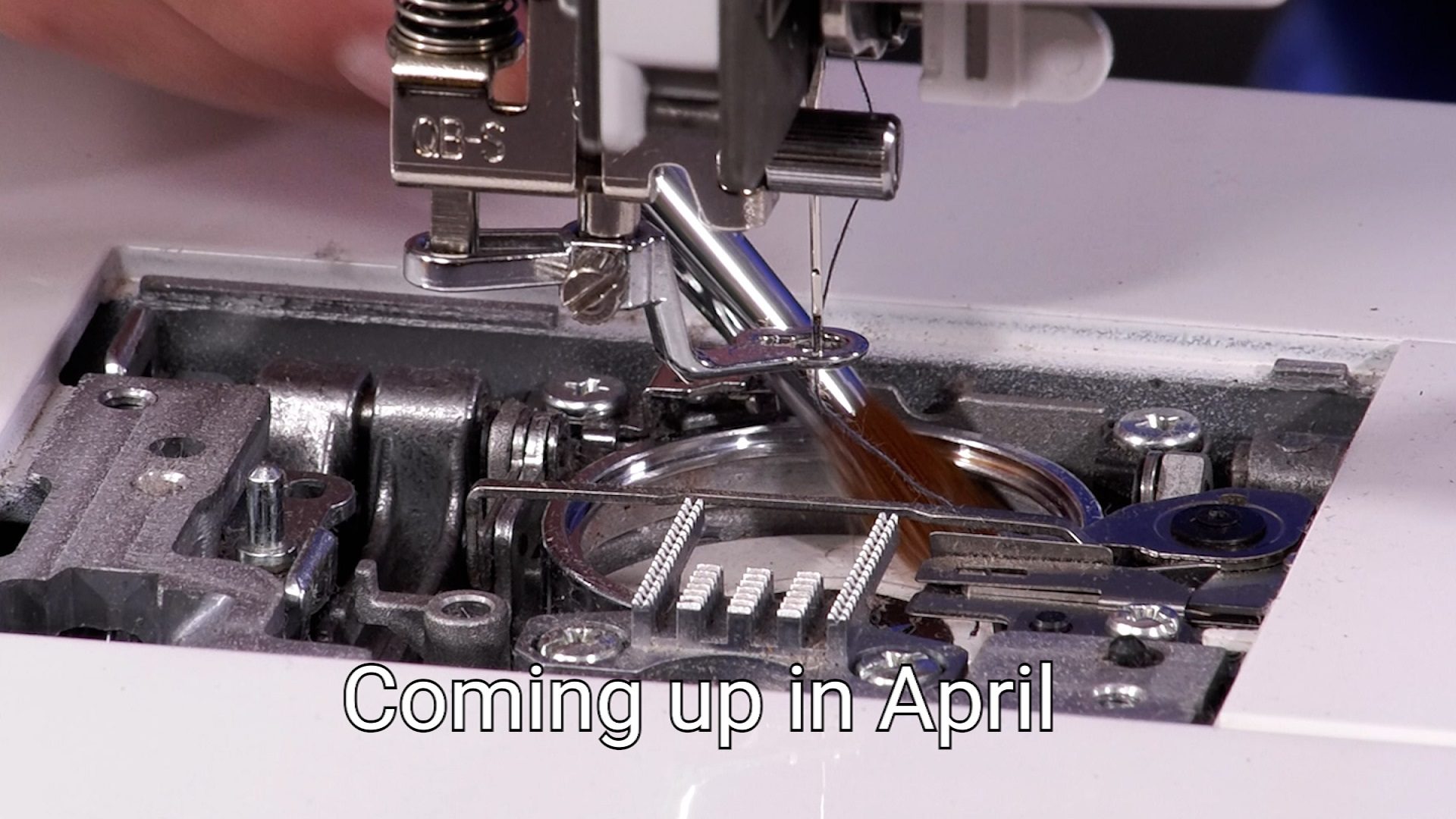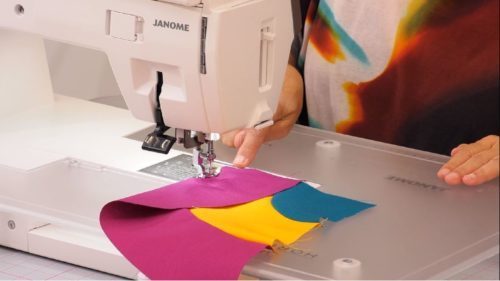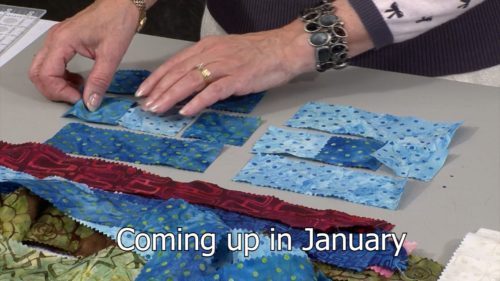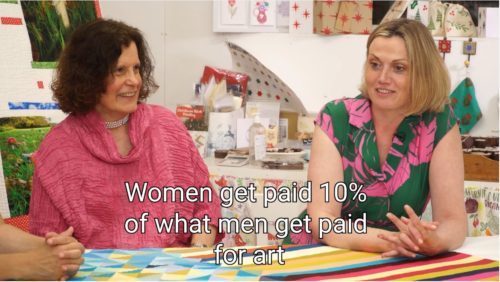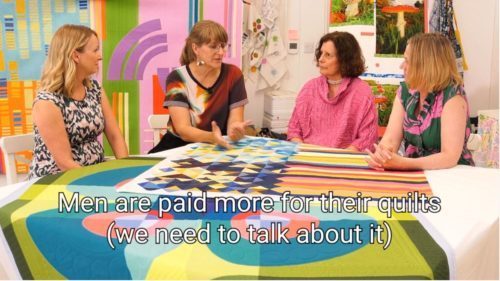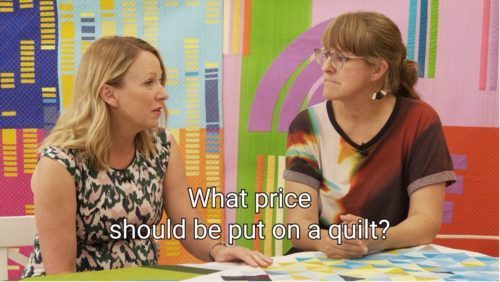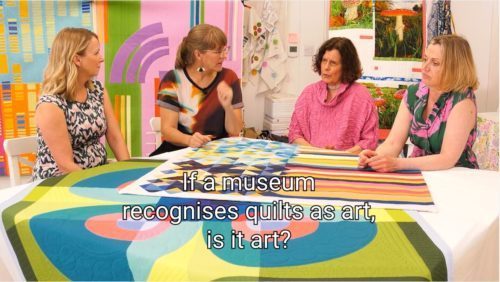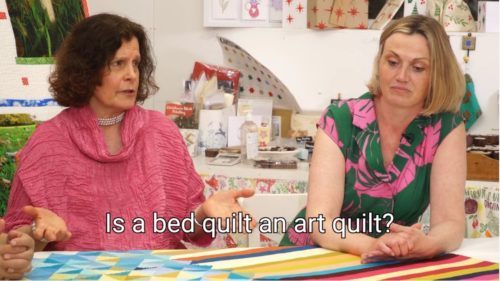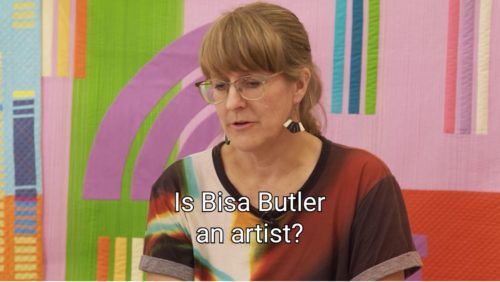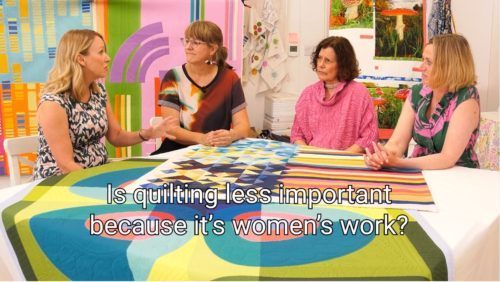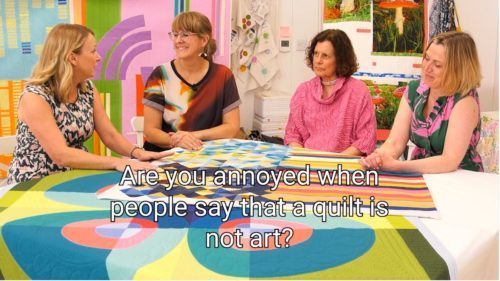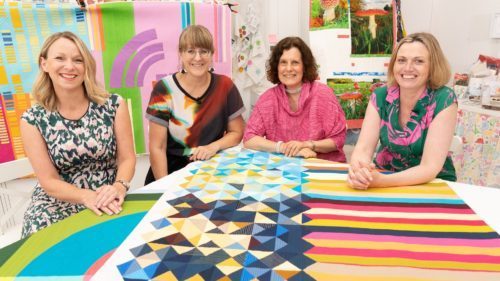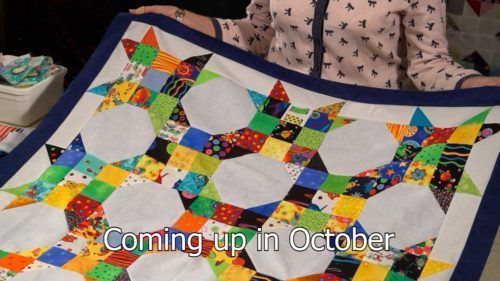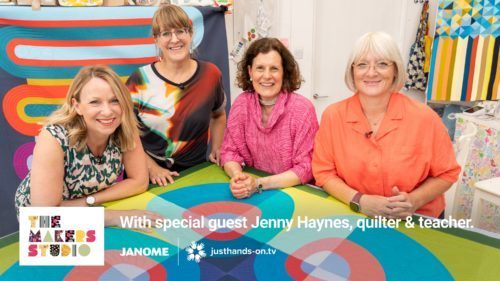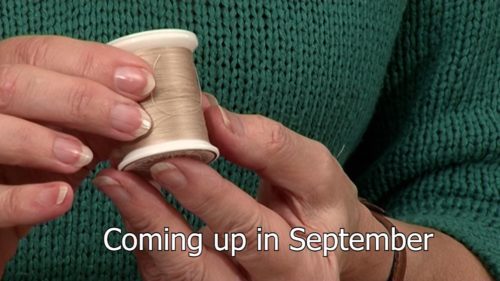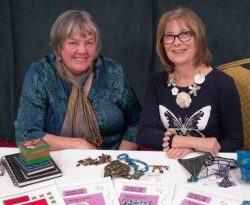About Jenny
Jenny is a modern quilt designer and teacher known for her colourful, curvy machine pieced patterns.
Jenny Haynes (née Nilsson) studied Pattern Cutting and Tailoring in her native Stockholm. Soon after, she followed her passion for fabrics and moved to London to study Fashion and Textiles at the London College of Fashion. She went on to develop her own label ‘Papper, Sax, Sten’ (that’s ‘Paper, Scissors, Stone’ in case you’re wondering!), creating award-winning designs that reflect her many different influences. She is based out of Sheffield, now.
Her bespoke quilts and furnishings are recognised for their clean and simple, mid-century modern design. Jenny mixes rich colours with pastels and is not scared of a colour clash. She often uses her trademark curves together with solid fabrics, while remaining faithful to her Scandi’ roots.
Jenny’s work was recognised in Summer 2015 when Jenny was invited by the Swedish Chamber of Commerce, along with 18 other Swedish designers, to be a part of Heal’s Swedish Summer Exhibition. Heal’s have a long history of promoting Swedish design with exhibitions in 1923, 1951 and 1971.
Her quilts and patterns appear regularly in books and magazines, including Thames & Hudson for the V&A and in Patchwork & Quilting: A Maker’s Guide, ‘Designed by teachers and practitioners at the leading edge of today’s craft revival.
Two of her quilts won awards at QuiltCon 2019 in Nashville. QuiltCon is arranged by the Modern Quilt Guild and is the biggest exhibition of modern quilts in the World.
When Jenny isn’t designing her curvy and quirky quilt patterns, she teaches at the V&A as well as giving talks and running workshops for Guilds and textile venues in the UK and abroad. She also offers live online workshops.
You can watch Jenny demonstrate how to sew no pin curves in this episode of The Makers Studio series.
Signature Technique
Colourful curvy quilt patterns
Top Tips
- Use a shorter stitch length (1.8) for stitching curves to give your block extra strength and to avoid splitting in the seam.
- When colours clash a bit it gives your quilt spark.
- When sewing curves, always start with the smallest curve then work your way up.
- Your finger is the pin when sewing no pin curves.
- Always finish all of your piecing before pressing your block. It’s easy to stretch your block out of shape if you press before you are done.
- Press your seams open for a flat, block print like finish.
- Use a tailor’s block to help you seams stay flat.
- Precise and variable quilting designs help to enhance the organic shapes in your quilt.
Videos
Patterns
Posts
Charity sewing day
Anna and her Mum, Jo, joined the charity sewing day that was held tomake quilts for Momentum and made donations both for their time and for fabric - thanks so much.
Anna went home with a delightful piece of cat fabric and here is the bookmark she turned it into.
Again - nice work Anna.
Quilt as you Go option
What do you do if the quilt becomes too big to manage? Well quilt as you go is an option - and both Valerie and Carolyn Forster have methods you might like to try: Valerie uses the machine and Carolyn works by hand: Here is the comment from Heather - I have also just re-watched your video on how to join a quilt as you go project using the machine instead of hand sewing.
Filming Day with Fran Rose.
We were busy yesterday filming with Fran Rose who is passionate about beading; got several workshops filmed as well as details of her new books and kits – so keep an eye on the shop. Picture taken by Matt Bigwood.


